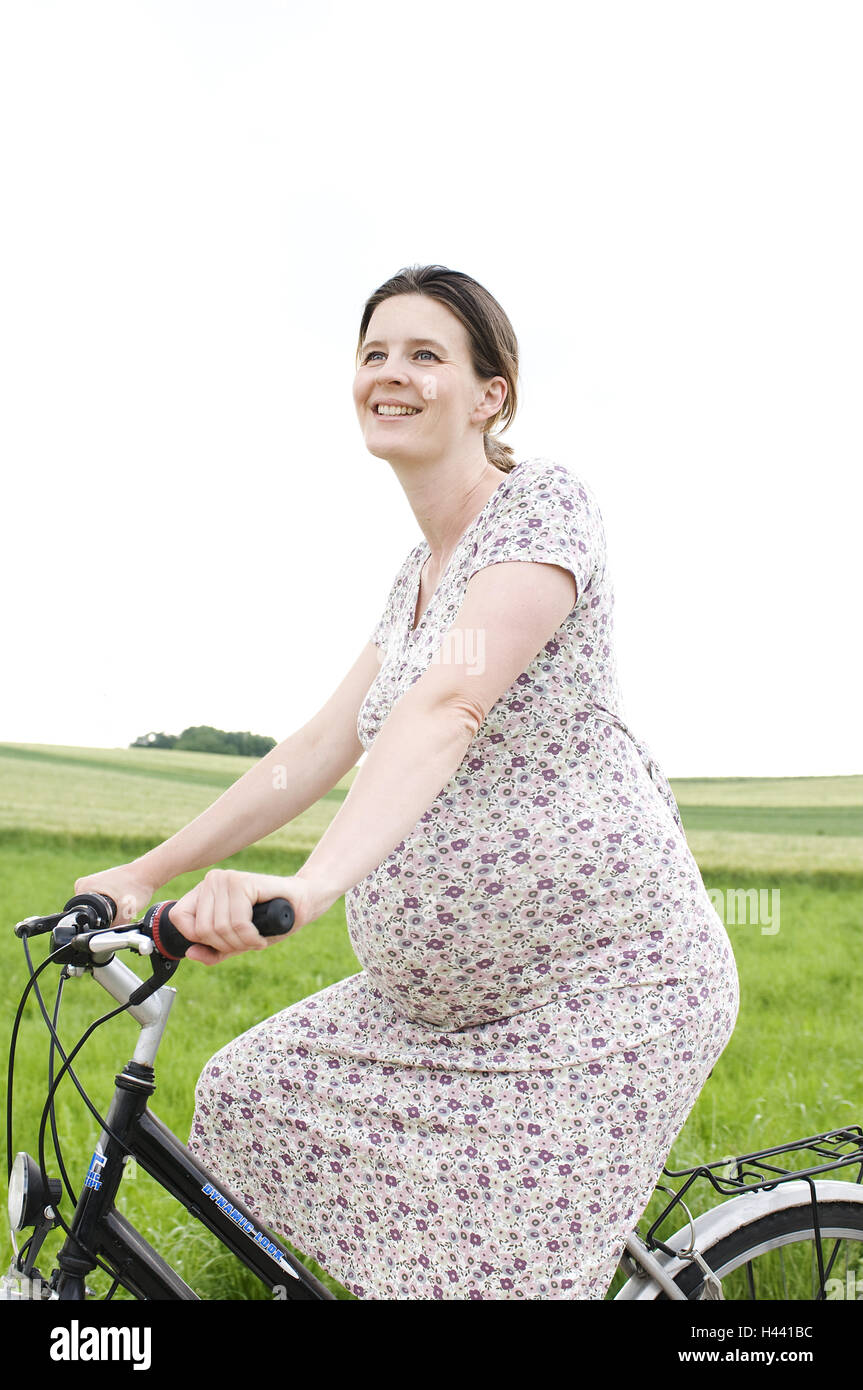Cycling During Pregnancy: An Overview
Pregnancy is an exciting time for expectant mothers, but it also comes with many questions and concerns. One common question is, “should pregnant women ride bikes?” While it’s essential to prioritize safety during pregnancy, it’s also crucial to maintain physical activity to support overall health and well-being. Regular exercise during pregnancy can help reduce the risk of gestational diabetes, improve mood, and promote better sleep.
Bike riding is a low-impact form of exercise that can be an excellent option for pregnant women who want to stay active. However, it’s essential to approach cycling during pregnancy with caution and take specific precautions to ensure safety. In this article, we’ll explore the potential benefits and risks of cycling during pregnancy, as well as practical tips for safely riding a bike while expecting.
Understanding the Risks and Concerns
While cycling during pregnancy can offer numerous benefits, it’s essential to be aware of the potential risks and concerns. One of the most significant risks is the possibility of falls, which can lead to injuries for both the mother and the growing fetus. Additionally, balance issues can arise as the pregnancy progresses, making it more challenging to ride a bike safely.
Another concern is the potential impact of cycling on the growing fetus. While moderate exercise during pregnancy is generally considered safe, high-intensity activities or exercises that involve jumping, bouncing, or sudden changes in direction should be avoided. Cycling at a moderate pace and for short distances can be a safe option, but it’s essential to listen to the body and avoid pushing oneself too hard.
Pregnant women should also be aware of the potential risks of overheating, dehydration, and exhaustion while cycling. It’s crucial to stay hydrated, wear appropriate clothing, and take breaks as needed to avoid these risks. Additionally, pregnant women should avoid cycling in high-traffic areas or on uneven terrain, which can increase the risk of accidents and injuries.
How to Safely Cycle During Pregnancy
Cycling during pregnancy can be a safe and enjoyable form of exercise, but it’s essential to take specific precautions to ensure safety. Here are some practical tips and advice for safely cycling during pregnancy:
- Choose the right bike: Opt for a comfortable and stable bike with an upright riding position. Avoid bikes with narrow handlebars or aggressive riding positions, which can put strain on the back and neck.
- Adjust the seat height: Make sure the seat is at the right height to prevent knee pain or discomfort. A good rule of thumb is to set the seat height so that the knee is slightly bent when the pedal is at its lowest point.
- Wear appropriate safety gear: Always wear a helmet when cycling, and consider using additional safety gear such as reflective clothing or a bell to increase visibility.
- Stay hydrated: Drink plenty of water before, during, and after cycling to prevent dehydration.
- Take breaks: Take breaks as needed to rest and stretch, and avoid pushing oneself too hard.
- Avoid high-traffic areas: Choose quiet streets or bike paths to avoid the risk of accidents and collisions.
- Listen to the body: Pay attention to any changes in balance, energy levels, or physical discomfort, and adjust the cycling routine accordingly.
By following these tips, pregnant women can enjoy the benefits of cycling while minimizing the risks and concerns associated with bike riding during pregnancy.
Considerations for Different Trimesters
As pregnancy progresses, the body goes through many changes that can affect balance, energy levels, and physical comfort. Here are some specific considerations for cycling during each trimester of pregnancy:
- First trimester: During the first trimester, hormonal changes can cause fatigue, dizziness, and nausea. Pregnant women should listen to their bodies and take breaks as needed. It’s also essential to stay hydrated and avoid overheating, which can increase the risk of dehydration and exhaustion.
- Second trimester: During the second trimester, energy levels often increase, and many women feel more comfortable and confident riding a bike. However, balance can become an issue as the belly grows, so it’s essential to take extra precautions to prevent falls. Pregnant women should also be mindful of any physical discomfort or pain and adjust the cycling routine accordingly.
- Third trimester: During the third trimester, physical discomfort and fatigue can make cycling more challenging. Pregnant women should consider switching to a stationary bike or a recumbent bike, which can provide more support and comfort. It’s also essential to avoid high-impact activities and exercises that involve jumping, bouncing, or sudden changes in direction.
By understanding the specific considerations for cycling during each trimester of pregnancy, pregnant women can adjust their cycling routine to accommodate their changing bodies and ensure safety and comfort.
Real-Life Examples of Pregnant Cyclists
Many pregnant women have successfully continued to cycle throughout their pregnancies, enjoying the benefits of fresh air, exercise, and independence. Here are some examples of pregnant cyclists and their experiences:
- Anna, a cycling enthusiast from Portland, Oregon, continued to cycle throughout her pregnancy, adjusting her routine to accommodate her changing body. She switched to a stationary bike during the third trimester and avoided high-traffic areas to minimize the risk of accidents. Anna credits cycling with helping her maintain her physical and mental health during pregnancy.
- Sarah, a mother of two from London, England, cycled to work every day until she was 36 weeks pregnant. She wore a maternity belt to provide extra support and adjusted her seat height to accommodate her growing belly. Sarah says that cycling helped her stay fit and energized during pregnancy and made her feel more connected to her body.
- Laura, a cycling instructor from Sydney, Australia, continued to lead cycling classes until she was 32 weeks pregnant. She modified the exercises to make them safer and more comfortable for pregnant women and encouraged her students to listen to their bodies and take breaks as needed. Laura says that cycling during pregnancy helped her feel strong, capable, and empowered.
By following the tips and advice for safely cycling during pregnancy and consulting with healthcare professionals, pregnant women can continue to enjoy the benefits of bike riding while minimizing the risks and concerns associated with pregnancy.
Alternatives to Cycling During Pregnancy
While cycling during pregnancy can offer numerous benefits, it may not be the best option for all pregnant women. Here are some alternative forms of physical activity that pregnant women can consider if they are unable or unwilling to cycle:
- Swimming: Swimming is a low-impact form of exercise that can provide many benefits during pregnancy, including improved circulation, reduced swelling, and increased muscle tone. Pregnant women can swim laps, join a water aerobics class, or simply wade in the water to stay active and healthy.
- Walking: Walking is a simple and accessible form of exercise that can be done almost anywhere. Pregnant women can walk around the neighborhood, in a park, or on a treadmill to get their heart rate up and improve their overall fitness.
- Prenatal Yoga: Prenatal yoga is a gentle form of yoga that is specifically designed for pregnant women. It can help improve flexibility, reduce stress, and increase strength and endurance. Prenatal yoga classes are often offered at local gyms, yoga studios, or community centers.
- Strength Training: Strength training can help pregnant women maintain muscle tone and improve their overall fitness. Pregnant women should use light weights and perform slow, controlled movements to minimize the risk of injury.
By exploring alternative forms of physical activity, pregnant women can find the best exercise routine for their individual needs and preferences. It’s essential to consult with healthcare professionals before starting or continuing any exercise regimen during pregnancy, including cycling or alternative forms of exercise.
Consulting with Healthcare Professionals
Before starting or continuing any exercise regimen during pregnancy, including cycling, it’s essential to consult with healthcare professionals. Here are some things to consider when consulting with healthcare professionals:
- Medical History: Discuss any medical conditions or previous pregnancies with healthcare professionals. This information can help healthcare professionals determine if cycling is a safe and appropriate form of exercise during pregnancy.
- Exercise History: Share any exercise history with healthcare professionals, including the type and frequency of exercise. This information can help healthcare professionals determine if cycling is a suitable form of exercise during pregnancy and provide guidance on how to adjust the exercise routine to accommodate pregnancy.
- Physical Changes: Discuss any physical changes or discomforts with healthcare professionals, such as changes in balance, energy levels, or physical discomfort. Healthcare professionals can provide guidance on how to adjust the exercise routine to accommodate these changes and ensure safety and comfort during pregnancy.
- Monitoring: Healthcare professionals may recommend monitoring the heart rate, blood pressure, or other vital signs during exercise to ensure safety and prevent complications. It’s essential to follow their guidance and report any unusual symptoms or changes in vital signs during or after exercise.
By consulting with healthcare professionals, pregnant women can ensure that they are engaging in safe and appropriate forms of exercise during pregnancy, including cycling. It’s essential to prioritize safety and listen to the body to balance safety and physical activity during pregnancy.
Conclusion: Balancing Safety and Activity During Pregnancy
Cycling during pregnancy can offer numerous benefits, including improved cardiovascular health, increased muscle tone, and reduced stress. However, it’s essential to understand the potential risks and concerns associated with bike riding during pregnancy and take specific precautions to ensure safety and comfort.
Pregnant women should consult with healthcare professionals before starting or continuing any exercise regimen during pregnancy, including cycling. Healthcare professionals can provide guidance on how to adjust the exercise routine to accommodate pregnancy and ensure safety and comfort.
When cycling during pregnancy, pregnant women should choose the right bike, adjust the seat height, and wear appropriate safety gear. They should also consider the specific considerations for cycling during each trimester of pregnancy, including any changes in balance, energy levels, and physical discomfort.
Real-life examples of pregnant women who have successfully continued to cycle throughout their pregnancies demonstrate the potential benefits and challenges of bike riding during pregnancy. By following practical tips and advice for safely cycling during pregnancy, pregnant women can enjoy the benefits of bike riding while minimizing the risks and concerns associated with pregnancy.
In conclusion, maintaining physical activity during pregnancy is essential for overall health and well-being. While cycling can offer numerous benefits, it’s essential to balance safety and activity during pregnancy. By consulting with healthcare professionals, choosing the right bike, adjusting the seat height, wearing appropriate safety gear, and considering the specific considerations for each trimester of pregnancy, pregnant women can safely and comfortably enjoy the benefits of bike riding during pregnancy.






